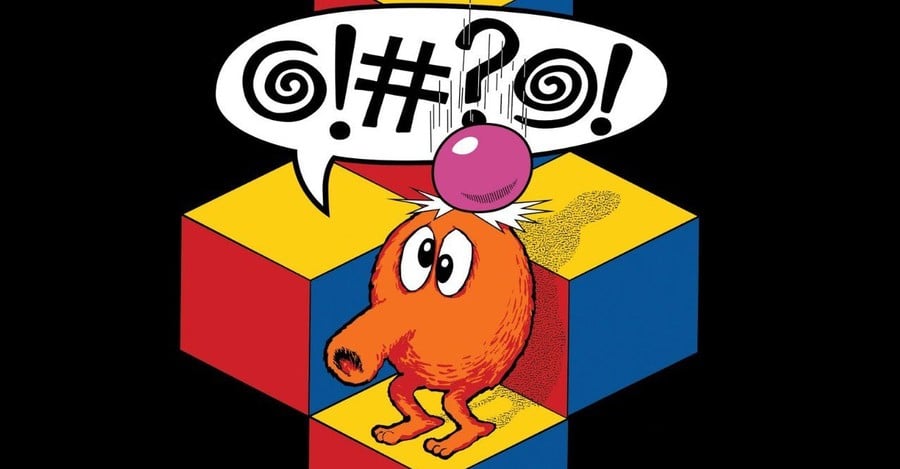
There are few characters from the golden age of video games that are quite as recognizable as Q*Bert. Gottlieb's sweary mascot with the long snout first appeared on the arcade scene back in 1982 in Q*Bert and went on to become a worldwide phenomenon, resulting in console ports, sequels, and mountains of merchandise.
The programmer Warren Davis was the person responsible for designing the original arcade game, working alongside graphic artist Jeff Lee, and audio engineer David Thiel at Gottlieb. In recent years, Davis has been active in the retro gaming community, appearing at various events to promote his recent book Creating Q*Bert: and Other Classic Video Arcade Games and sharing stories from Q*Bert's development. So, to mark 40 years of Q*Bert and the release of New Wave Toys Q*Bert RepliCades, we recently sat down to chat with Warren Davis (over a call) about the arcade icon.
We talked about everything from the thought process behind the design of the arcade classic to why he turned down the chance to make a proper sequel. What follows is that conversation but edited for clarity and flow.
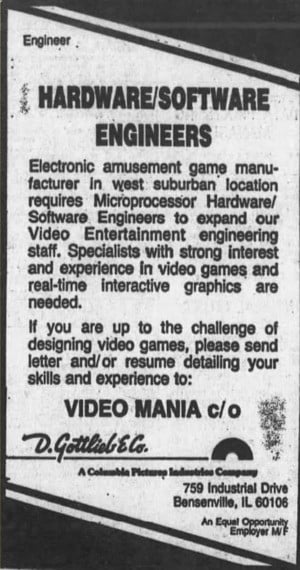
Time Extension: First things first, how did you get into programming? And what led to you getting the job at Gottlieb?
Warren Davis: I had a Bachelor of Science (BS) in Computer and Systems Engineering from Rensselaer Polytechnic Institute (RPI) and a Master of Science (MS) in Electrical Engineering from Ohio State. I'd been working at Bell Labs in Naperville, Illinois but that job had me moving around the country quite a bit, which I got tired of after a while. So I quit in the late summer of 1981.
Some aspects of that job made me think I was done with engineering as a career. I moved from the suburbs into Chicago proper and started studying Second City-style improvisation, but that wasn't paying the bills though, so after trying a few odd jobs, I began looking at engineering jobs in the classified ads of the Sunday paper. Lo and behold, the Sunday right after Christmas 1981, there was an ad from Gottlieb looking for video game programmers. I responded to it and got the job.
Time Extension: There seems to be a lot of confusion about the origins of Q*Bert online. I’ve read two different accounts: one where you were inspired by a hexagonal pattern that another coworker had made and another from Jeff Lee, where he states he was inspired by M.C. Escher. What’s the story there?
Warren Davis: I think there’s a very simple story and a very simple explanation – we’re both correct. Completely. We both agree that Jeff created a screen filled with the cube pattern. There’s no question about that. He did it. And he didn’t do it for me. He did it for another programmer, Kan Yabumoto. And I happened to see it and envisioned a pyramid. And I thought, ‘Wow, if a ball fell from the top, it would have one of two ways it could bounce: down to the left or down to the right.' Our differing accounts really don’t have anything to do with the cubes, because again, we agree.
[How we differ is that] he has this document in which he wrote up a game proposal. He doesn’t exactly have a recollection of exactly what transpired, but he has this document. Well, I have no doubt that he wrote up a game document after I had programmed the balls bouncing down the pyramid — I didn’t have a game plan at that point, so it makes perfect sense that he would come up with something. But, unfortunately, at Gottlieb, the artists weren’t expected to be the game designers, the programmers were expected to be the designers. And so, my role, because I literally wrote every line of code, was to make all the design decisions.
Now, I relied on Jeff very much. We worked together really well. We were a fantastic team and he had fantastic ideas. When I loved them, which was often I’d say, I’d use them and that’s why I’d consider him a close collaborator and one of the design team. I feel the same way about Dave Thiel who did the sounds. It wasn’t important for me to somehow take all the glory of being the designer. It was my first game and I took ideas from anybody…
Time Extension: Yeah, you mention several times in your Coin-Op account about all the people who suggested ideas, like Ron Waxman, the VP of Engineering at Gottlieb, who suggested the squares should change colour, and Rick Tighe who made the suggestion for the knocker inside the cabinet --
Warren Davis: What you don’t hear about are the myriad suggestions that I did not take. I saw myself as the filter. So people were constantly throwing ideas, ‘Hey, you should do this, you should do that, you should do that.’ But as the game designer, I was the filter and as the sole programmer, I had to be the filter. Nothing got in the game if I didn’t like it.
Time Extension: On that note, are there any ideas you remember saying no to?
Warren Davis: The shooting out of the nose is the biggest one. Jeff created the characters before I made the game and I think this particular character was designed the way he was with the intention of shooting stuff like little boogers out of his nose, and to this day, I think it’s a hysterical idea, it’s very fun. But because it was my first game, and once we had the nature of the pyramid and the sort of pseudo-3D hopping, to me, shooting would have been a nightmare. Aiming and just figuring out the 3D traversal. I didn’t want to touch that.
So yeah, that’s an example of something I just nixed immediately, and then the other thing people kept going on at me about was the orientation of the joystick. People wanted the joystick to go up, down, left, right. Like how could I make that work? Look at the playfield, he’s going down to the left, down to the right; it seemed very obvious to me, but a lot of people seemed to have a hard time with that so those are just a couple of examples. I have to say, I’ve probably forgotten most of the things because as soon as I heard them I was like, ‘Yeah, thanks, no!’

Time Extension: In my research, I came across an article where one of the sales representatives at Banner Specialty Company said the reason why they picked up the game was because of its non-violent theme. Was that something that came up in design conversations after the idea of shooting stuff was nixed?
Warren Davis: If Q*Bert was shooting stuff out of his nose, I don’t know how you could call that violent. It’s comical. I don’t know if there were a lot of violent games at the time. But there were a lot of high-intensity games and there were a lot of games that did involve shooting.
I remember getting word back fairly early on that the game was fairly popular with women. And that was maybe surprising. Again, none of this was planned in any way. I was just trying to make a game that I thought was fun and that people would enjoy. I wasn’t attempting to reach any particular demographic. I wasn’t trying to make any sort of social statement by not having violence in it. I was just trying to make a game that was fun. But these are the kind of things that came back to us later. And I’m like, ‘Great if that helps contribute to its success, fantastic!’
Time Extension: The game was released in October 1982. Do you still remember the first time you walked into an arcade and actually saw the game being played by people? And what was your reaction to that?
Warren Davis: It was freaky! It was just so weird. I had lived with it for months and I had also gone to the arcades where we were testing, so I was not unfamiliar with the experience of watching people play it in an arcade, but that was sort of a - not a controlled environment but a planned environment.
Once they started filtering out, they would pop up in my neighbourhood in bars that I would frequent, and pizza places, and 7/11s. It was crazy to just sort of watch people play. And I always felt like I wanted to say something like ‘Hey, that’s my game, that’s my game’, but I didn’t because if I was playing a game and somebody walked up and said ‘That’s my game’ I’d be like ‘Okay, sure, how am I supposed to know that’s true?’ I just felt so weird talking about it with people, but it was amazing to watch and see people enjoying the game out in the field.
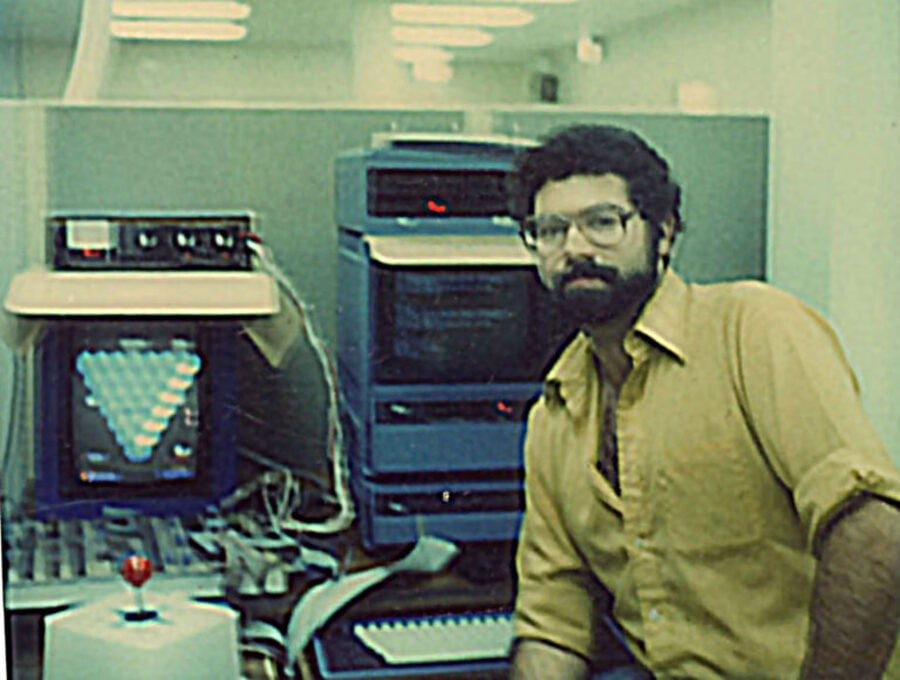
Time Extension: Q*Bert is still remembered fondly today. Have you spent any time trying to work out what led to this incredible longevity? Do you have any potential theories?
Warren Davis: I go to a lot of retro gaming shows nowadays and so many people come up to me and tell me how frustrating the game is but they still love it. So the only thing I can conclude is that just managed to live in that sweet spot where a game is frustrating and challenging, but not so much so that people are frustrated to the point of, ‘I don’t want to play this anymore.’ It’s more like, I’m frustrated but I’m enjoying it and I want to get better at it.
And the other thing was the fact that some people could play it for long stretches was inspiring to those who hadn’t mastered it yet and it made them think, 'Well if that guy can be so good, I might get better'. So I think those two factors really must account for it. And of course, the character has a personality and the graphics are amazing, and a lot of people talk about the 3D or the knocker and how that brought it to life in a surprising way. So there’s just so many things that were in its favour and yeah, I’m just grateful because a lot of it was just instinct, it wasn’t really planned.
Time Extension: There have been a ton of ports of the original in the years since. Do you have a personal favourite?
Warren Davis: The ColecoVision port was my favourite back in 1983. It most closely matched the graphics and gameplay of the arcade game.
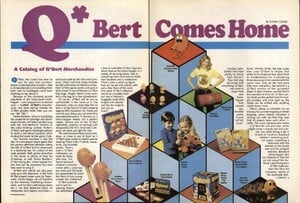
Time Extension: Another thing I came across in the Coin-Op account is that you collected a lot of Q*Bert merchandise yourself. Is there any favourite piece of Q*Bert merchandise that you came across for Q*Bert?
Warren Davis: I think maybe my favourite was the Q*Bert plush toy because that ended up in my son’s crib. My son was born in 1983 so it was very convenient that he got a little Q*Bert plush toy that made him very happy.
I don’t know that there was a favourite. I was a little overwhelmed and stunned by the breadth of what they were going for merchandising-wise. I mean, card games, board games, figurines, t-shirts of course. I had a couple of T-shirts back in the day. Of course, they’ve mostly disintegrated; I think they’re all gone now. But yeah, I don’t know if I have a favourite. I just was overwhelmed by just how many things there were.
Time Extension: You've stated before that after Q*Bert you were asked to create a sequel to it. Was that after the cancelled Faster, Harder, More Challenging Q*Bert or the same project?
Warren Davis: I’ll clarify the timeline for you. So I didn’t even entertain the idea of Faster, Harder, More Challenging Q*Bert until after Q*Bert was completed and we got reports back from people in the field playing it for just hours on a single quarter. The reaction of panic was completely mine. I think management at Gottlieb was completely fine with what was happening because people loved the game and it was collecting coins, but it was just a thing for me when I started to hear that anybody was playing it past level 5 because I didn’t even think it was possible to play past level 5.
So when I started getting word, that’s when I started to panic. And Faster, Harder, More Challenging Q*Bert was sort of a reaction to that and also sort of a restoration because I had been encouraged to keep making it easier and slower by management as I was developing it. So I thought, alright, let me make my “director’s cut”, just something that I think is better and more like what I wanted originally, so I did that. They didn’t come to me for a sequel until after that was tested. And because it was tested so close to the original Q*Bert, it didn’t test well. That was no surprise to me, but they said, ‘Okay, we’re not going to release it.' I thought they would just hold on for a year and release it in a year, but they didn’t.
Anyway, after that, that’s when they came to me and said, ‘Do you want to do another Q*Bert game? A different Q*Bert game?’ Because I don’t think of Faster, Harder, More Challenging Q*Bert as a sequel necessarily; it was basically just a retuning of the original. But when they asked me if I wanted to do a sequel, I really wasn’t interested. I had other ideas I wanted to pursue and I did, so Neil Bernstein got the chance to do his Q*Bert idea, which was Q*Bert’s Qubes.
Time Extension: You mentioned after years of being unreleased the expansion Faster, Harder, More Challenging Q*Bert came out in the 90s for the MAME project. What were the conditions leading up to that release?
Warren Davis: I was working for Disney Interactive at the time and this was also around the time that the MAME project was released. People were coding up software emulators for old hardware video game systems and all you had to do was supply the ROM image as an input to the software emulator and you could play the old games on a PC.
Faster, Harder, More Challenging Q*Bert was literally just a ROM swap - different program, different foreground images, different background images. I believe there was no new sounds so you just kept the old sound ROMs and yeah, you just pop that into an emulator and you could play Faster, Harder, More Challenging Q*Bert.
So it had been years and the only place that I was aware that the ROMs existed was in my personal cabinet at home, where they had been since 1983. But through my colleagues at Disney Interactive, somebody said to me, ‘Hey, I know somebody in the MAME project’, and when I learned that I was like ‘Oh, I could give them the ROMs’. Because Q*Bert was emulated, Q*Bert was already available so I thought, why not? It just felt stupid that it was languishing in my cabinet and nobody had ever seen it. I just gave them the ROM images and they’ve been around since 97 I want to say.
Time Extension: To flash forward to today, how did the Q*Bert-themed 1/6th RepliCades come about? Did you reach out to them or did they reach out to you? How did it all work?
Warren Davis: They contacted me out of the blue. I think I got an email first and they said, ‘We’d like to talk to you about this’. So I gave them a call and they said ‘We’re going to be making the production version of Q*Bert as a RepliCade, and as a variant, we would like to make your personal Q*Bert.
There had been a blog written by Tony Temple, who goes by the Arcade Blogger. He had written about a number of oddball Q*Bert cabinets that were engineering samples and mine was one of them. And he had been over to my house and had taken pictures of it and published those. I guess New Wave Toys saw that and they thought, ‘God, this would be a cool little variant.’ I was like ‘Really? Why would anyone want that?’ I just thought that was nutty but was like ‘Sure, okay.' So I just supplied copious photographs of all the details, of all the stickers I have put on over the years, and the damage it has accumulated over the years, and they duplicated it!
Time Extension: Did you get a chance to give any feedback on them or how they played?
Warren Davis: Yeah, they gave me the first prototype to play with and I gave them a little bit of feedback and they made some adjustments. And they made adjustments on their own for things that I thought were perfectly fine, but they wanted them to be better. I have to say, these guys are crazy sticklers for detail. They want to get everything perfect and don’t stop until they feel like they have. But they love what they do too. It’s just been really fun to get to know these guys. They’re not far from me. They’re local here in the Los Angeles area, so it’s amazing. The stuff they come out with, it’s great. But yeah, I did get to play with the prototype and give them some feedback.
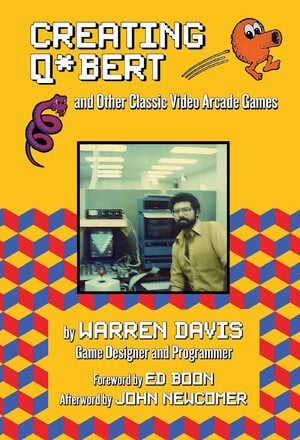
Time Extension: Earlier this year, you released a book about your career through Santa Monica Press called Creating Q*Bert and Other Classic Video Arcade Games. What inspired you to want to write a book about your career? And why now?
Warren Davis: I originally had the idea to write a book sometime around 2014 or 2015. I'd been going to retro-gaming shows and telling stories about various aspects of my career, and I'd also been running into former colleagues and reminiscing, which brought back many memories and clarified others. At some point, I realized there were a lot of stories to tell! And I thought "Maybe I should collect them in a book! Then I wouldn't have to tell them over and over again!" I was also somewhat inspired by hearing stories about the making of Q*bert that were slightly wrong (or sometimes very wrong). It bothered me that people were writing histories about things I did without asking me about them, and then getting them wrong.
But the idea of writing a book was daunting. It kicked around in the back of my head and eventually I started an outline breaking down my stories into chapters. I would add to it when a thought struck me. Eventually, the outline was complete and I had no excuses to stop me from doing the actual writing. Two years later or so later, the result was "You Can't Call It @!#?@!" which I self-published late in 2019.
When the pandemic happened, my plan to take the book to retro-gaming shows around the country kind of got scrubbed, so late in 2020, in my boredom, I reached out to some publishers to see if they were interested. Luckily I found one, Santa Monica Press, and we signed a deal in January 2021. They then spent most of 2021 re-editing the book with me and coming up with a new title and cover. We also got Ed Boon to write a foreword and John Newcomer to write an afterword.
If you want to buy Warren Davis's book, you can find it on his online store. You can also get 15% off by using the discount code AMAZON.






Comments 2
Fantastic interview!
I love this game so much. It's easily my personal favorite "golden era" arcade game, and the timing of this article is uncanny. I just ordered the mini-cab from New Wave a few days ago, and Warren Davis's book to go with it!
I agree - cool interview! Q-Bert was one of my favorite Colecovision games back then. Warren and co’s work has really stood the test of time.
That mini Qbert cabinet is very tempting!
If only I had more money and better eyesight! @!#?@!
Show Comments
Leave A Comment
Hold on there, you need to login to post a comment...